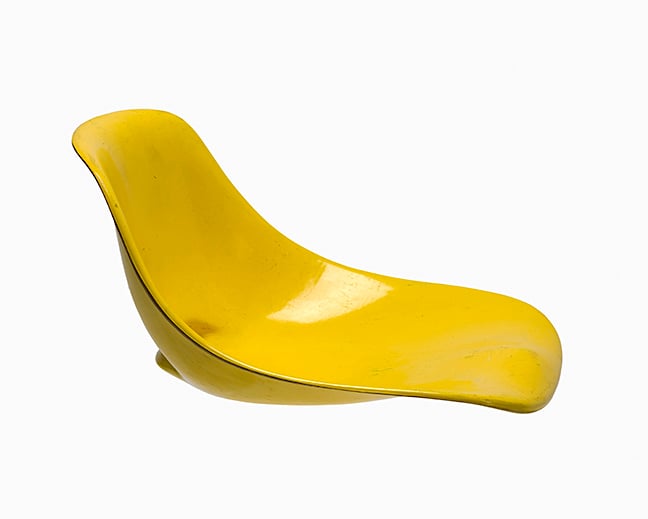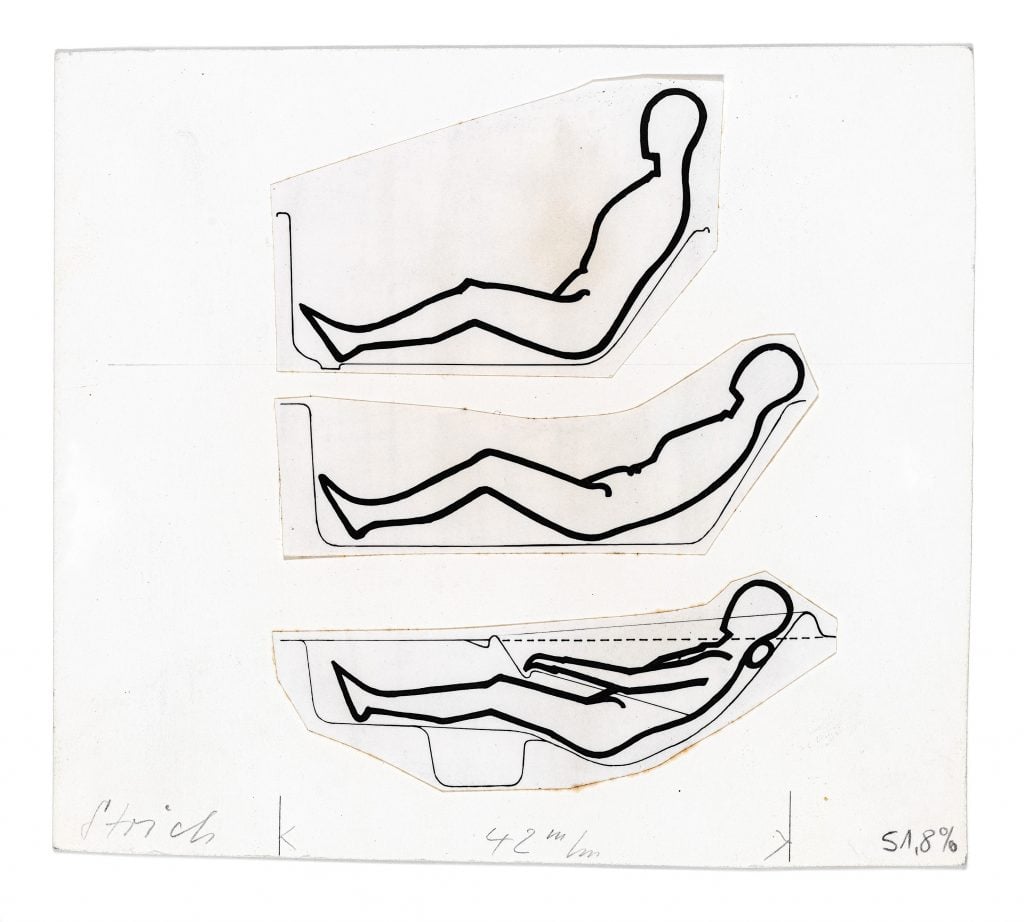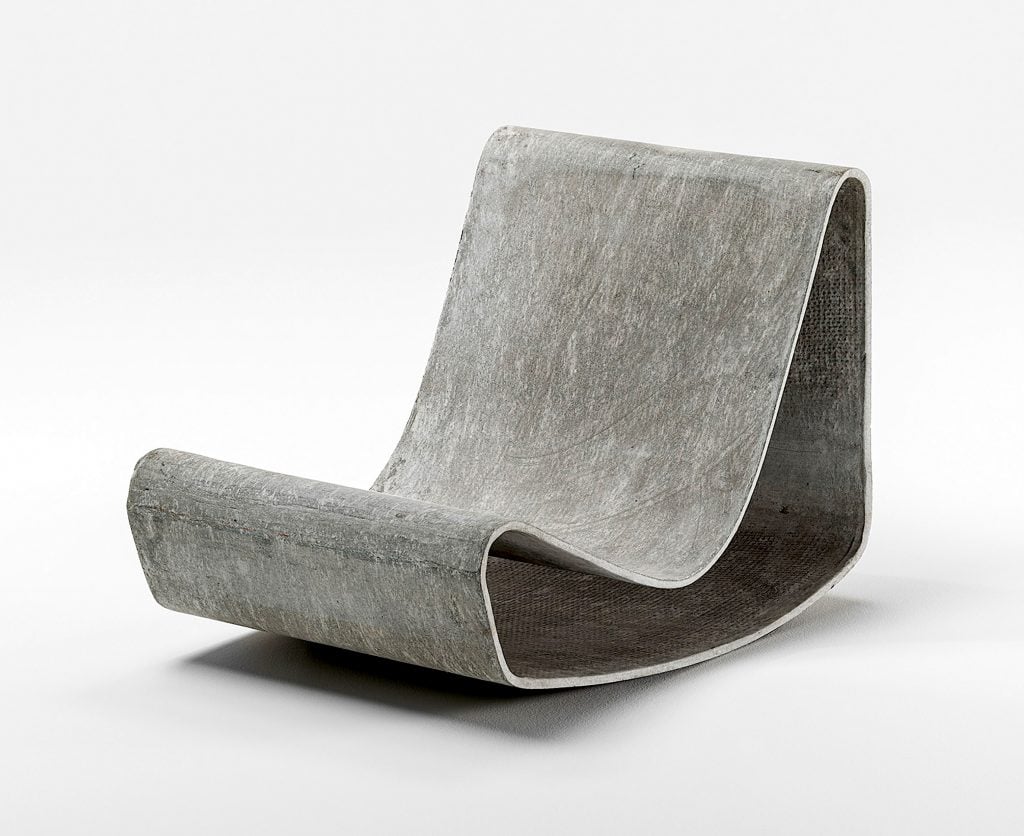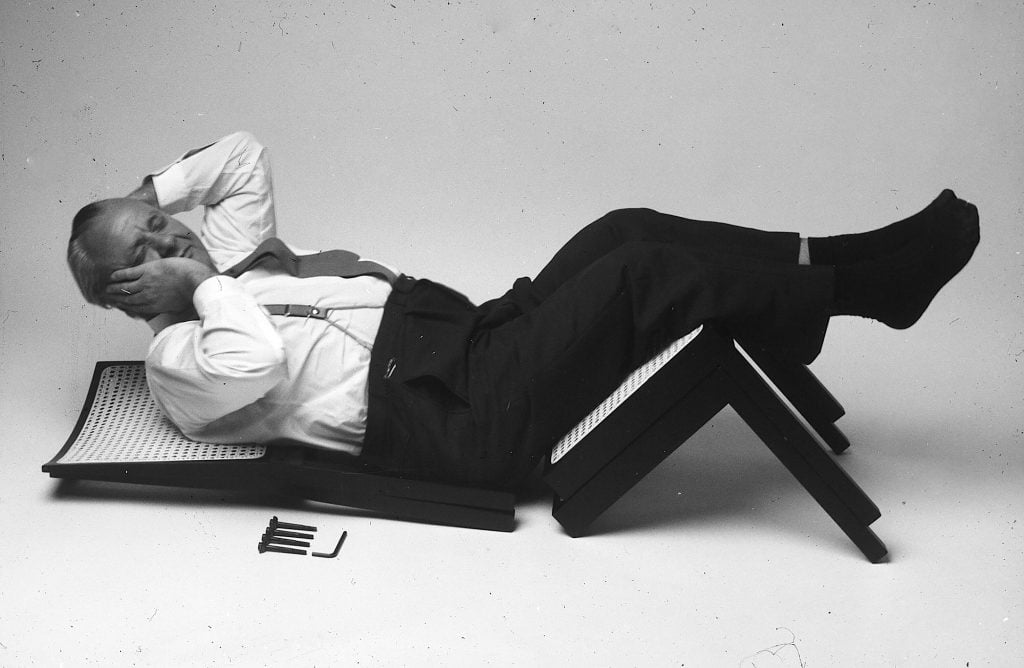On View
The Career of Willy Guhl, Creator of the Iconic ‘Shell Seat,’ Gets Another Look With an Exhibition in Zürich
On view through March 28, 2023, the retrospective highlights one of Switzerland’s most influential industrial designers.

On view through March 28, 2023, the retrospective highlights one of Switzerland’s most influential industrial designers.

Adrian Madlener

Famous for concepts like Shell Seat and Loop Rocking Chair, among other furnishings, luminaires, and accessories, the late Willy Guhl was a strong proponent of simplicity—what for many is a hallmark of Swiss design. The prolific talent was known for saying design must “achieve the most with the minimum effort.”
And yet the task of perfecting a unified shape that is as aesthetically pleasing as it is functional, or engineering the armature of a chair so that it uses as few connections as possible, is no small feat. Works like Flower Box (1954) or his circulatory bathtub design of 1956 are emblematic of this enduring philosophy. The comprehensive “Willy Guhl — Thinking with Your Hands” show currently on view at the Museum für Gestaltung in Zürich seeks to uncover what made this 20th-century master tick.

Willy Guhl’s Circulatory Bathtub compared with conventional bathtubs (1956). Illustration: Willy Bärtschi, courtesy of Museum für Gestaltung Zurich, © Heirs of Willy Guhl.
Possessing an appreciation for rationalism, as well as an inherent understanding of people’s needs, Guhl (1915-2004) was a pioneer of ergonomics, accessibility, and durability. The designer was an early proponent of hands-on learning and experimentation. The idea that to truly comprehend a problem, or gain implicit skills, one has to physically engage with the material and form of a potential solution, and not rely on a drawing board. As an instructor at the Zürich School of Art and Craft, Guhl required his students to make physical models and work directly with craftspeople, an approach that has again become a virtue in the industry, and perhaps its saving grace.
The designer was one of the first to develop flat-pack furniture during and soon after World War II. These affordable, easily transportable designs were instrumental in helping to rebuild war-torn Europe, especially when materials were scarce. Throughout the 20th century, Guhl adapted to changing movements and rapidly advancing technologies yet always held true to his fundamentals.

Willy Guhl, Garden Chair (1954). Photo: U. Romito and I. Šuta, courtesy of Museum für Gestaltung Zurich, © Heirs of Willy Guhl.
The exhibition—on view from December 19, 2022, through March 28, 2023—delves deep into extensive archival research conducted by the Swiss National Science Foundation, along with a slew of original designs, drawings, maquettes, and photographs from Guhl’s estate. Part of the showcase, a 1985 film includes testimonials from former students—such as Robert Haussmann, Carmen Greutmann, and Alois Rasser—who went on to establish their own successful practices. Immersive displays conceived by design students from the University of Art and Design in Lausanne provide further insight into his creative process. Visitors can even experience Guhl’s iconic Shell Seat for themselves.

Willy Guhl on a Bench Chair (ca. 1960). Photo: Bill W. Guhl, courtesy of Museum für Gestaltung Zurich, © Heirs of Willy Guhl.